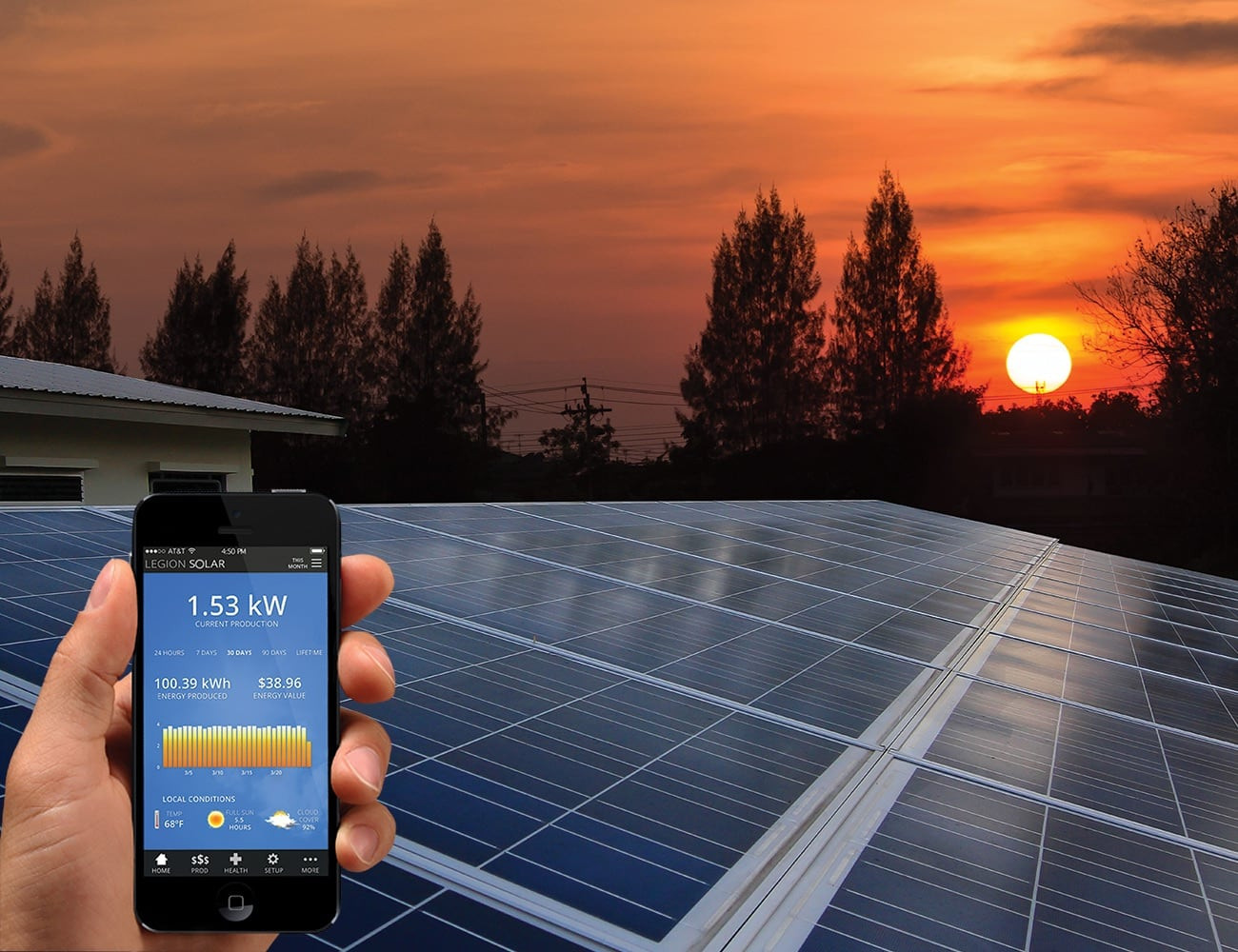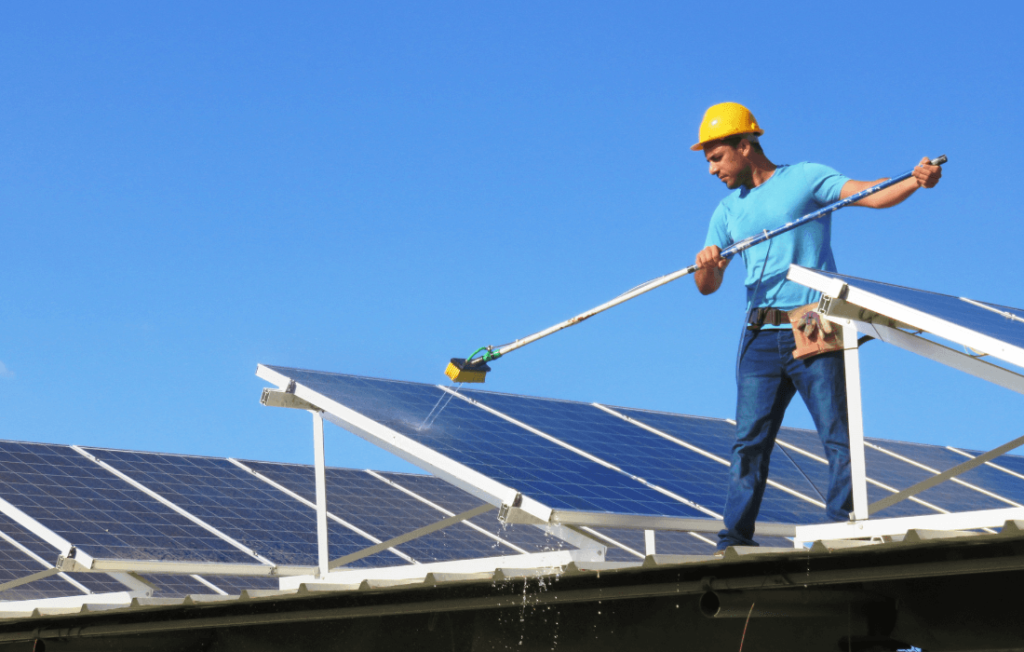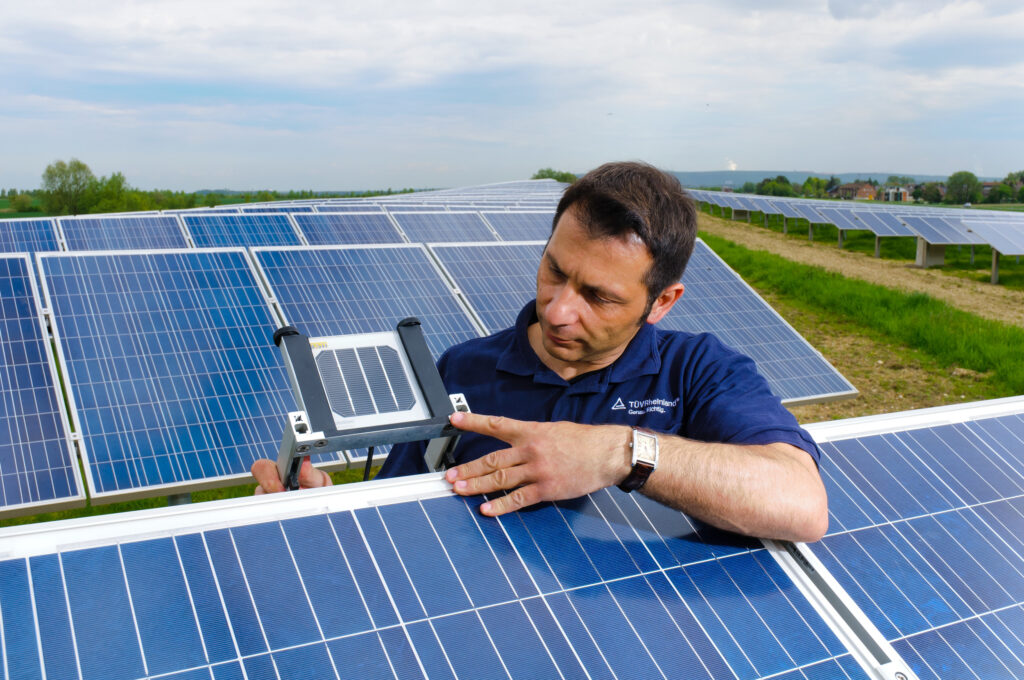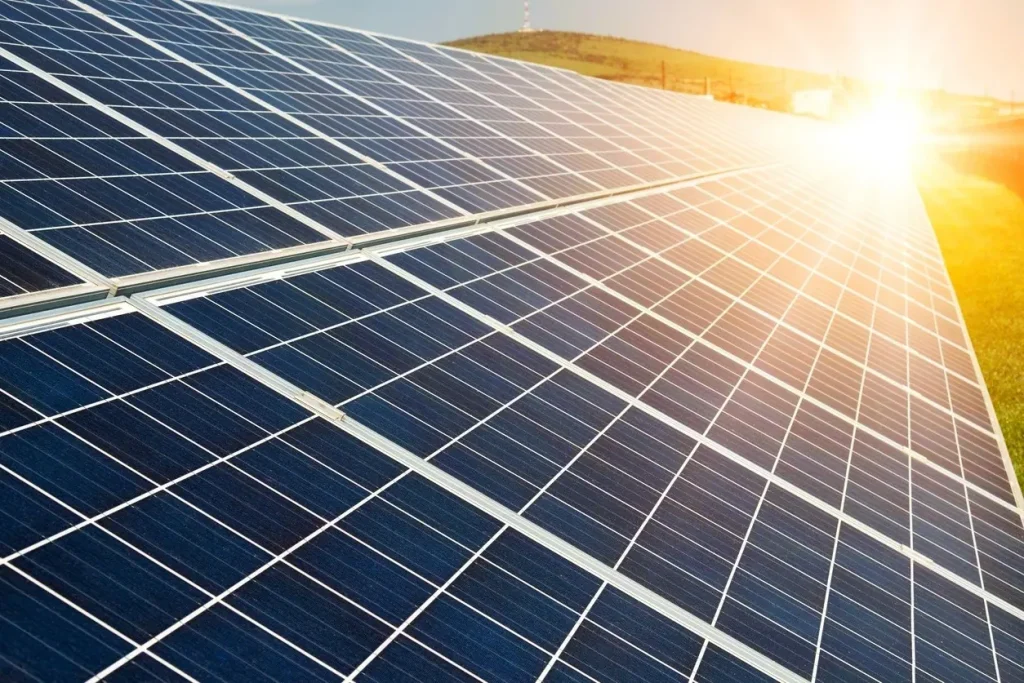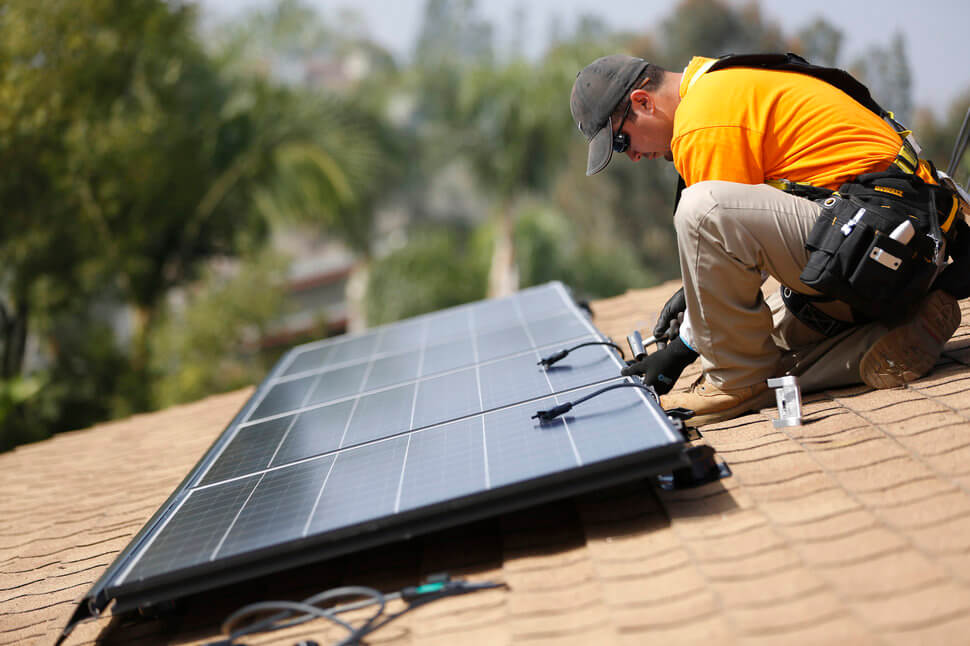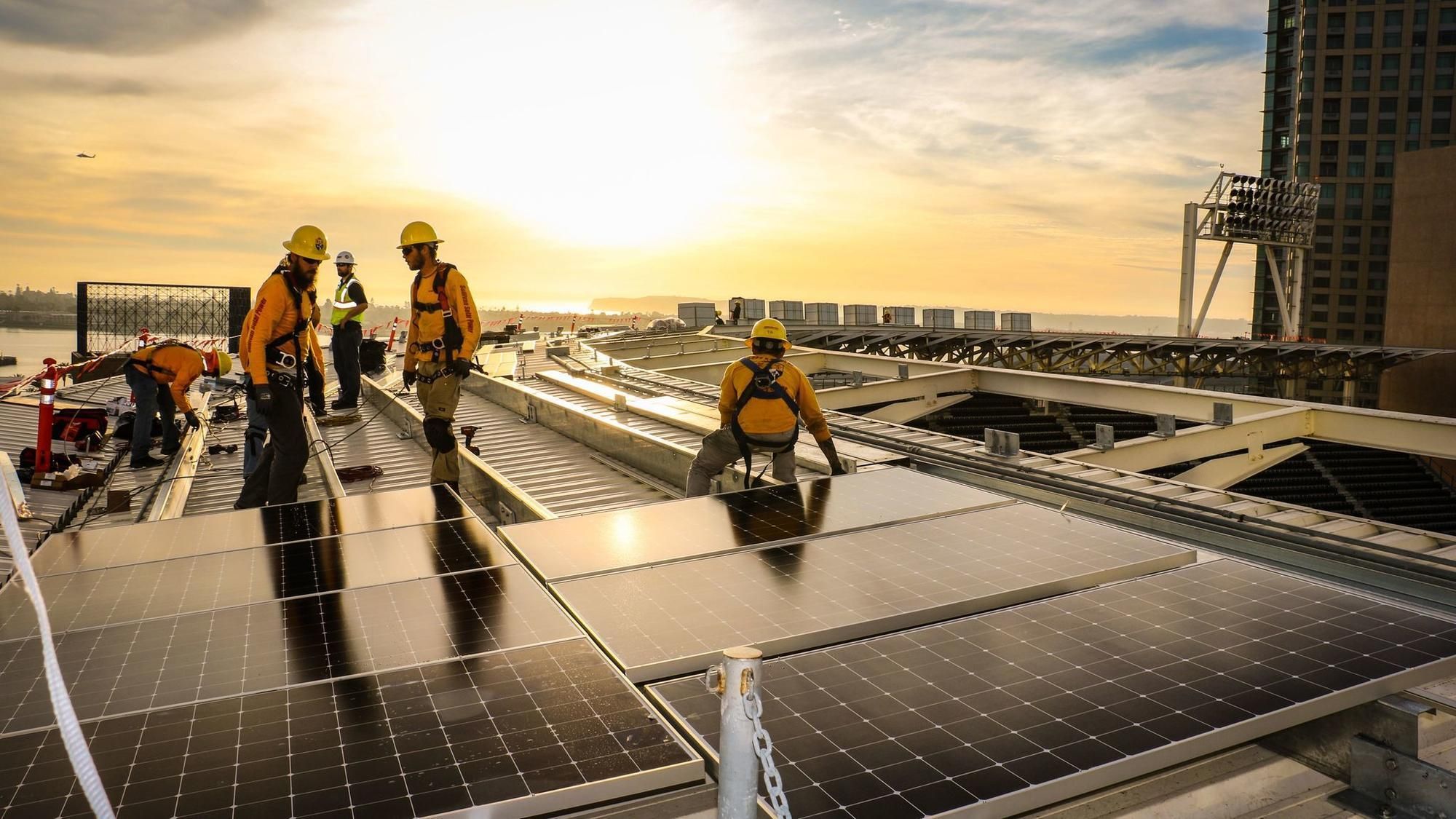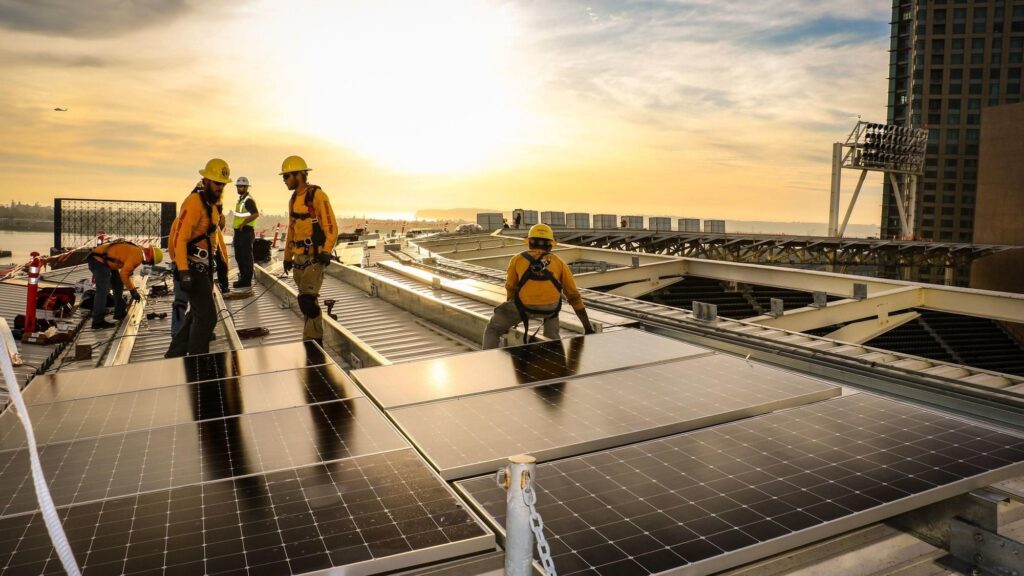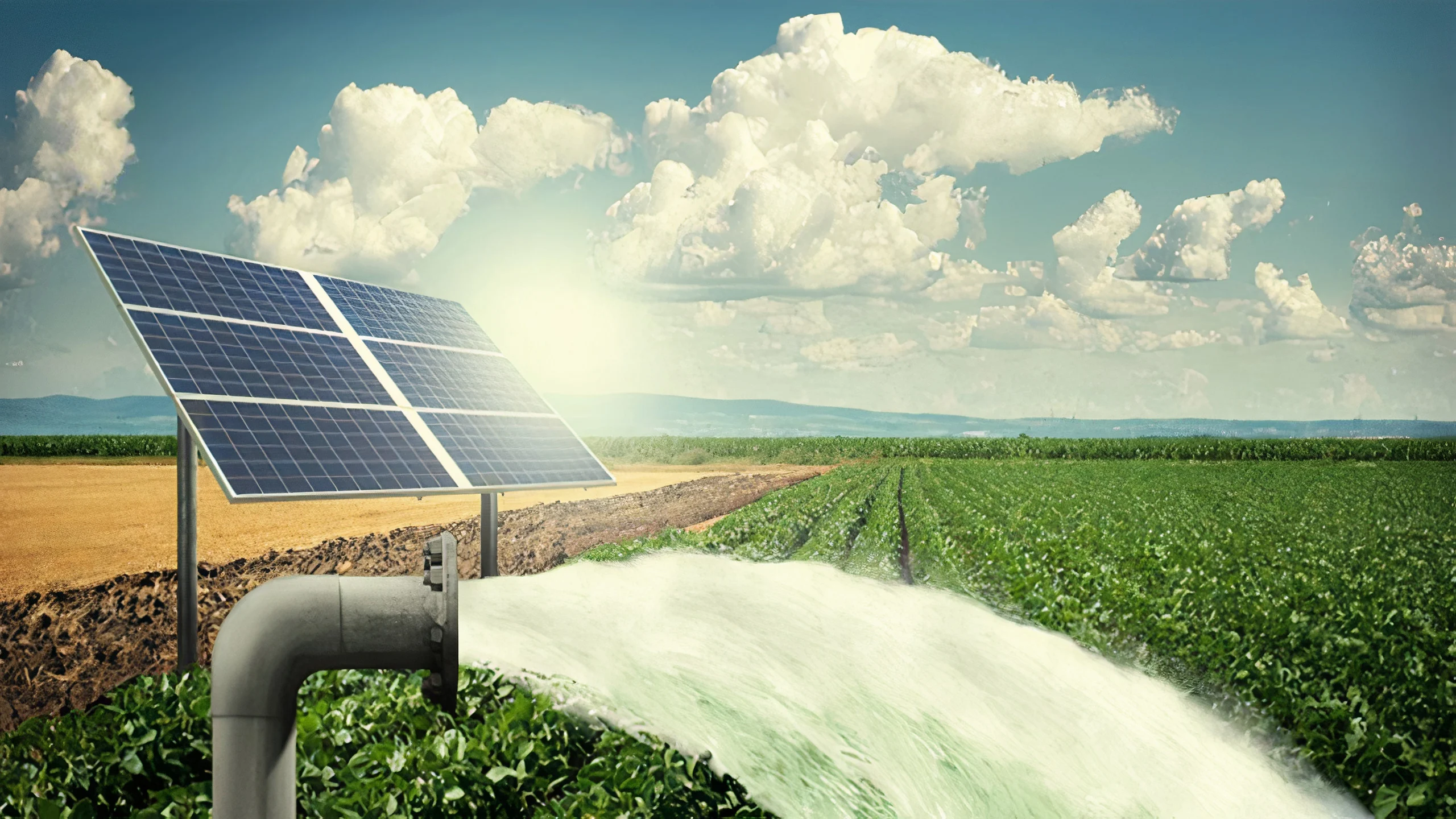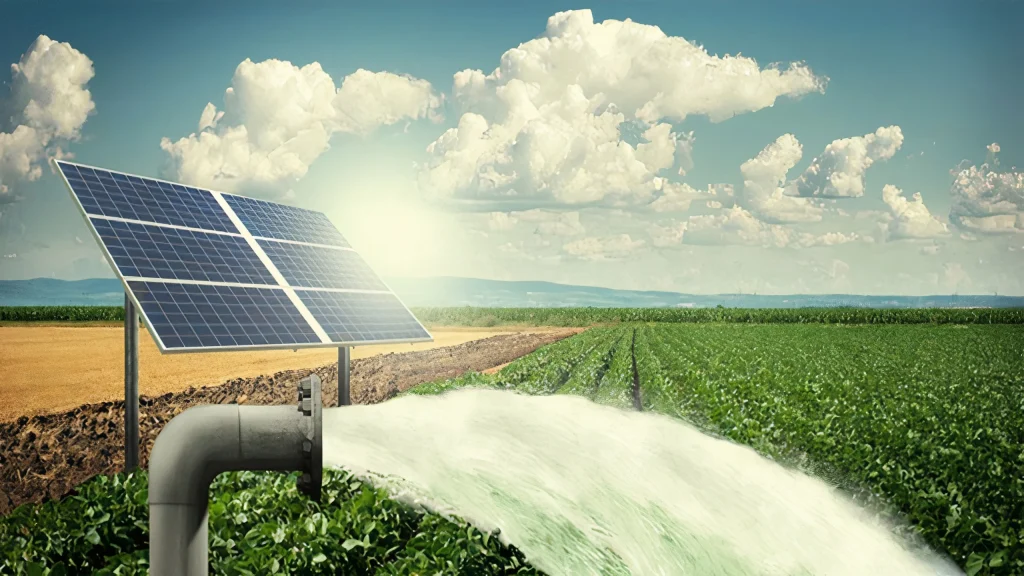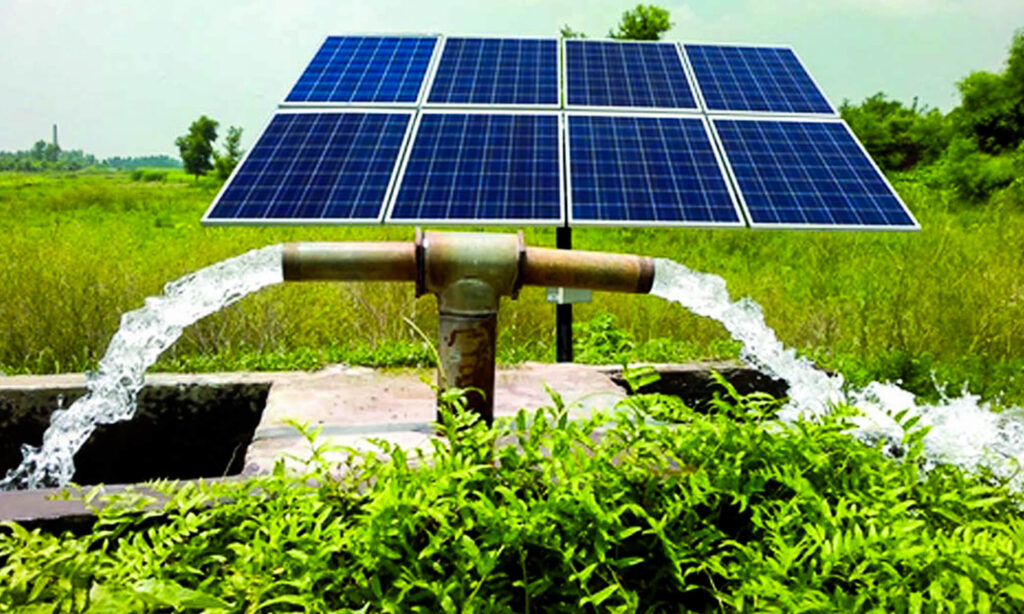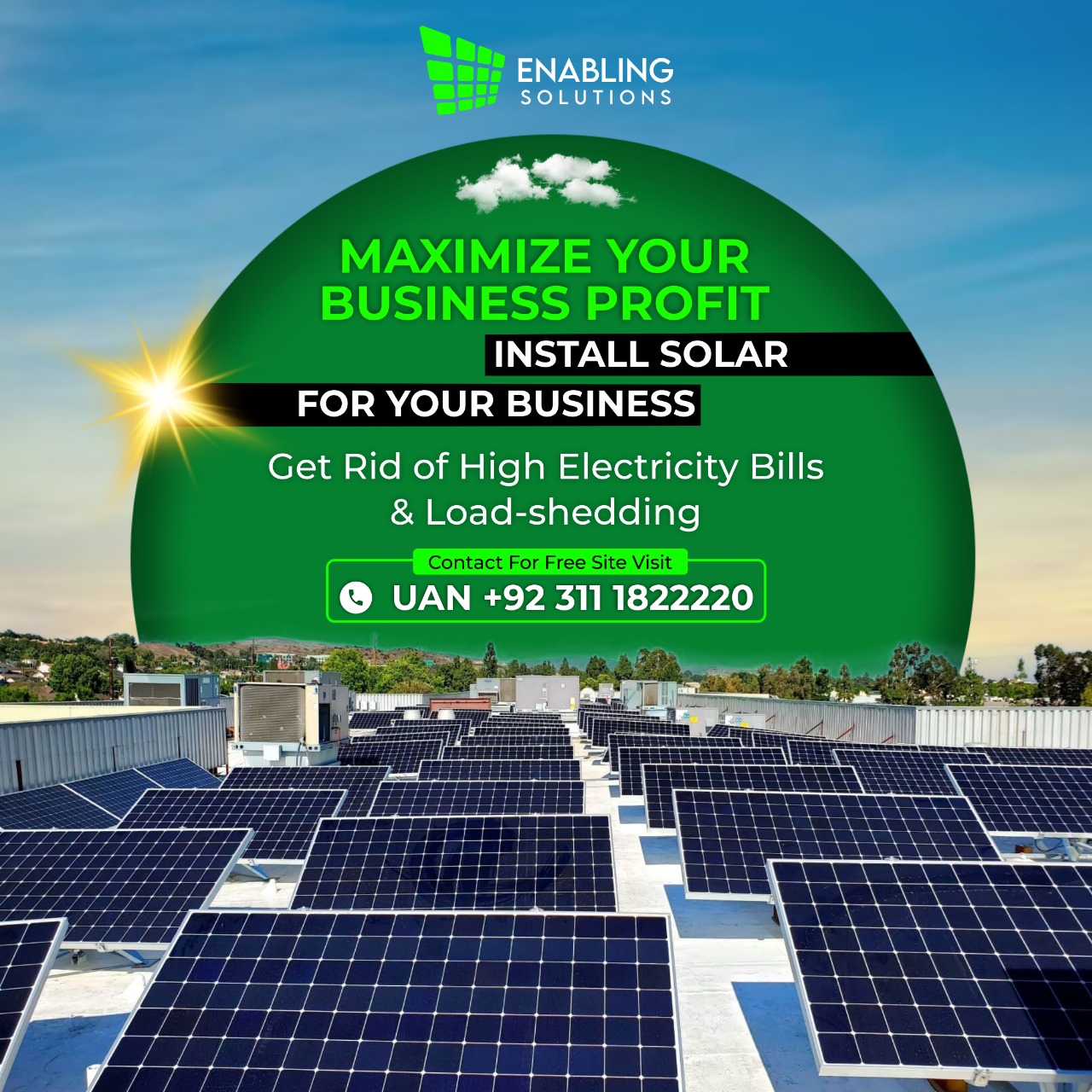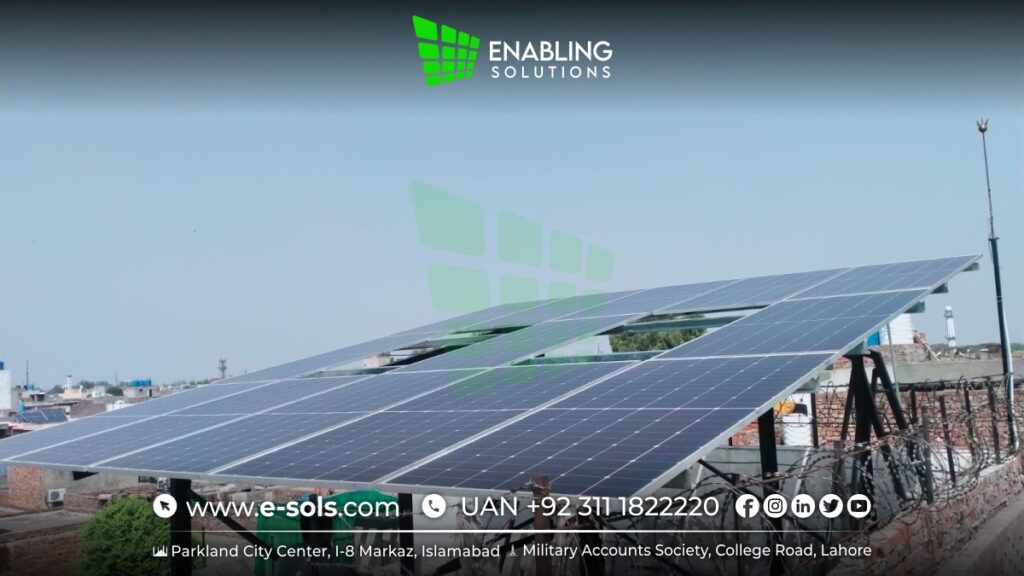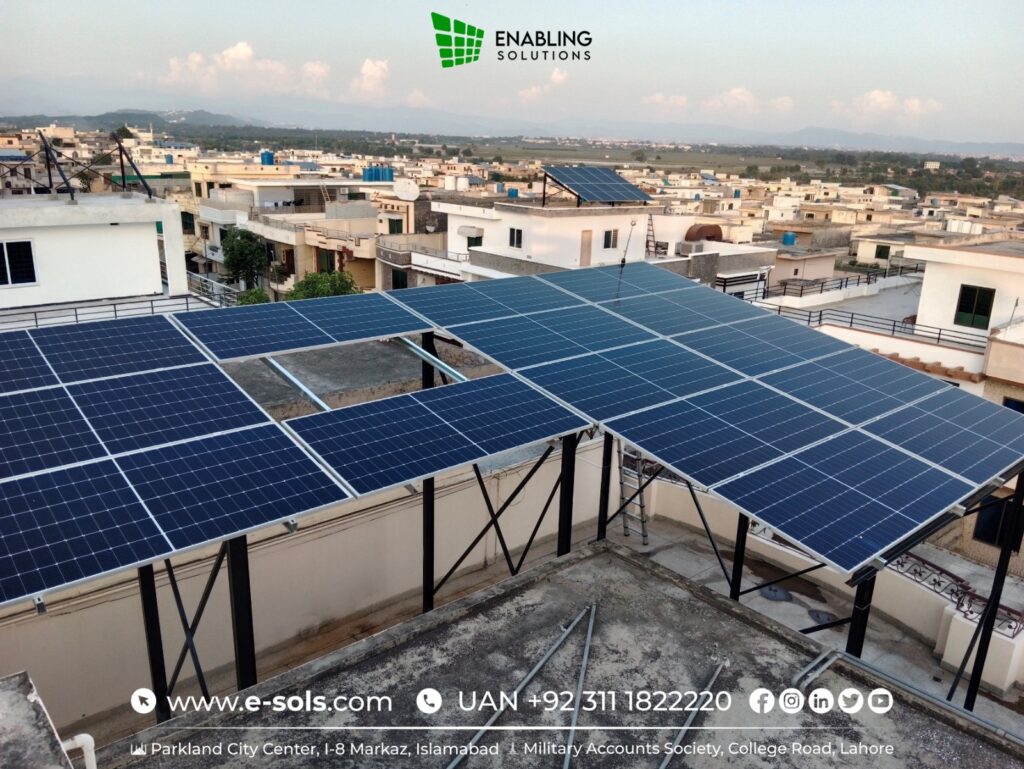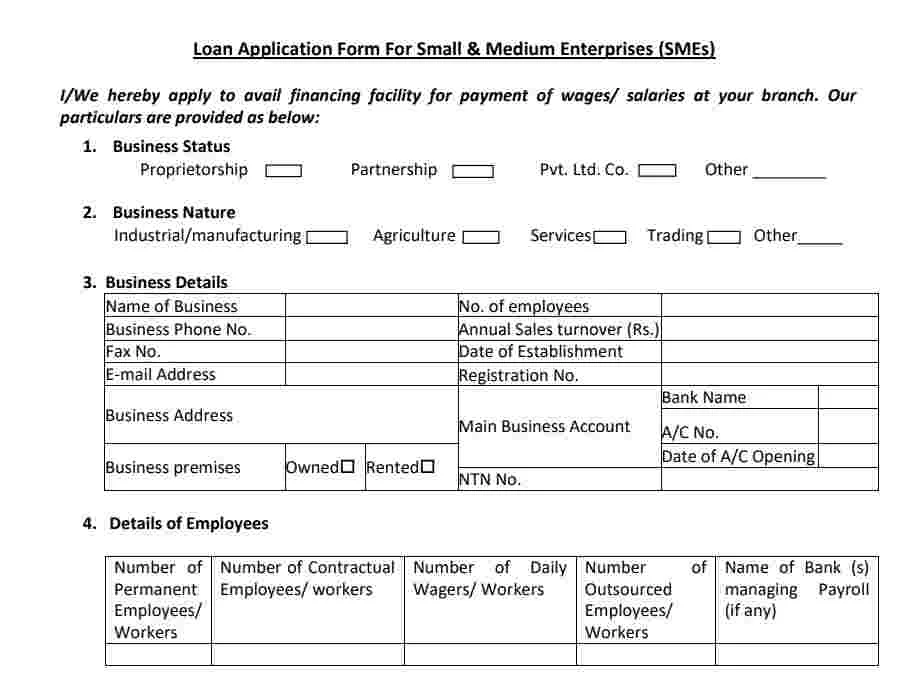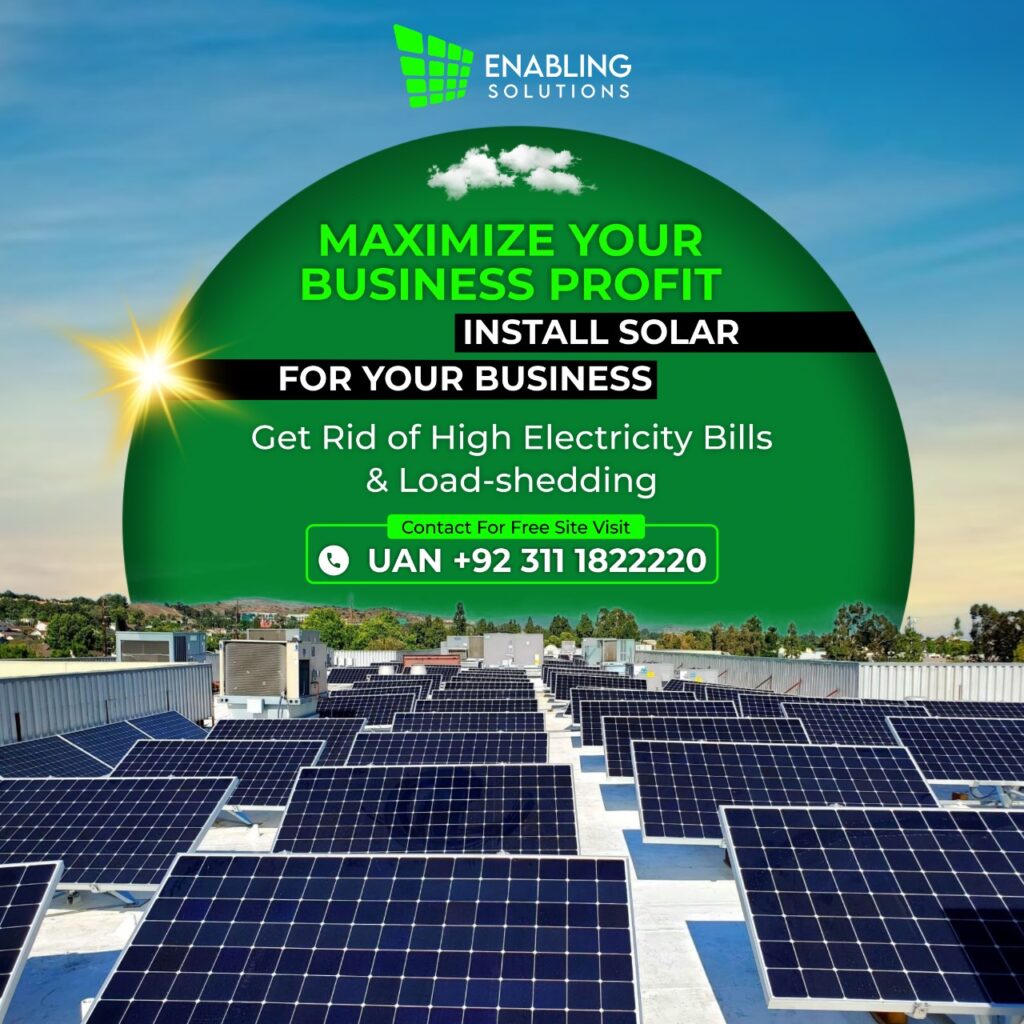Pakistani Banks Offering Solar Financing: The State Bank of Pakistan has launched a solar financing scheme in collaboration with commercial banks to encourage the widespread adoption of renewable energy sources in Pakistan. This initiative, facilitated by Enabling Solutions in partnership with all major commercial banks, provides individuals and businesses with the opportunity to install solar systems on an installment basis, ranging from 1 kW to 1 MW, under the latest solar financing scheme. Monthly installment amounts are fixed and paid over a specified period, depending on the chosen financing option. This initiative aims to promote the use of solar energy in various sectors, including industrial, commercial, domestic, and agricultural, with the ultimate goal of reducing reliance on imported fuels for beneficial electricity generation.
By harnessing solar energy, eligible individuals can generate their own electricity for a minimum of 25 years, potentially reducing their electricity bills to zero or even earning credits through excess electricity generation.
Enabling Solutions, in collaboration with all major commercial banks in Pakistan, serves as a valuable partner in facilitating the installation of solar systems through easy monthly installment plans. Regardless of your bank affiliation, Enabling Solutions can assist you in achieving your solar energy goals. In this comprehensive guide, you will find detailed information about the solar system installment program in Pakistan, including its scope, eligibility criteria, and other relevant details.
Table of Contents

State Bank of Pakistan Solar Financing Scheme – Pakistani Banks Offering Solar Financing
The State Bank of Pakistan (SBP) Solar Financing Scheme is a refinancing initiative aimed at providing financial support to banks. This support is designed to assist renewable energy investment entities (RE-IEs) in implementing renewable energy projects and solutions. The scheme allows banks to offer their customers the option to finance solar systems on an installment basis in Pakistan, catering to residential, commercial, industrial, and agricultural needs. Each bank has its own specific rules and regulations regarding solar panel installations on an installment basis in Pakistan, making it essential to understand the scope and eligibility criteria set by individual banks.
Scope:
The scope of the solar system installment program in Pakistan is to facilitate the adoption of renewable energy sources in domestic, commercial, industrial, and agricultural applications. This transition will result in several benefits for the country, including reduced dependence on imported fuels for electricity production. Solar financing initiatives in Pakistan will also enable individuals to access uninterrupted electricity at lower prices and even have the opportunity to sell excess generated electricity back to the grid.
Eligibility Criteria:
To encourage more people to adopt solar energy, the eligibility criteria for the solar system installment program have been simplified. There is no requirement for extensive documentation to obtain solar panels in installments in Pakistan. The two main requirements are as follows:
– The consumers must possess a computerized national identity card (CNIC).
– The consumer must own the property (house or business) where the solar system is to be installed.
Markup Rate:
The markup rate is set at an affordable 6% under the SBP scheme. However, it is important to note that the rate may vary based on the rules and regulations of individual banks. In general, the markup rate remains at 6% per year.
List of Solar Financing Banks in Pakistan:
Enabling Solutions has compiled a list of the top commercial banks in Pakistan that offer solar systems on installment to their customers at a reasonable markup rate. These banks include:
– Meezan Bank Limited
– Bank Alfalah
– Faysal Bank Islamic
– JS Bank
– Allied Bank Limited
– BOP
Each of these banks provides specific solar financing options, and Enabling Solutions is dedicated to assisting customers with the installation process in collaboration with these banks.
Meezan Bank Solar Financing Scheme – Pakistani Banks Offering Solar Financing
Meezan Bank, one of Pakistan’s largest banks, offers accessible and affordable options for solar system installation on an installment basis in Pakistan. The bank provides flexible and competitive payment plans, along with net metering facilities, in Karachi, Lahore, Islamabad, and other cities.
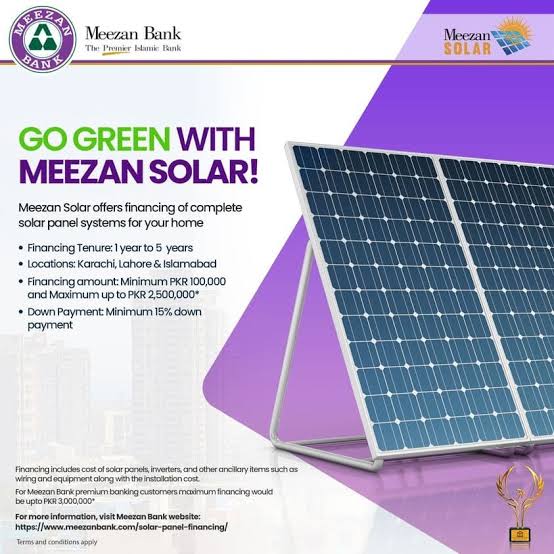
Eligibility Criteria
Applicant must hold a CNIC card.
Minimum Monthly Salary: For permanent job holders, the minimum monthly salary requirement is 100K.
For contractual job holders and business owners, the minimum monthly gross income requirement is 200K and 500K respectively.
Two references are required.
Must have a Meezan Bank Account – If the applicant currently does not have one, it will be opened to offer financing.
Must be an active taxpayer with an NTN number.
Property where solar has to be installed must be owned by the applicant.
Features of the Solar Financing Scheme
Financing is based on the Islamic concept of Mussawmah.
Special discounts are offered to premium customers.
Financing options are available for a minimum duration of one year and a maximum of five years.
The allowed capacity for solar systems ranges from 1 kW to 1 MV (1 Megawatt).
Costs Involved
Processing charges: 5000 + FED
STR Fee: 1000
Meezan Bank Energy partner survey charges: At actual cost, if applicable.
Bank Alfalah Solar Financing Scheme – Pakistani Banks Offering Solar Financing
Bank Alfalah offers a solar financing scheme to its eligible customers in Karachi, Lahore, and other cities. The scheme includes specific eligibility criteria and features, such as customized financing solutions and down payment requirements.
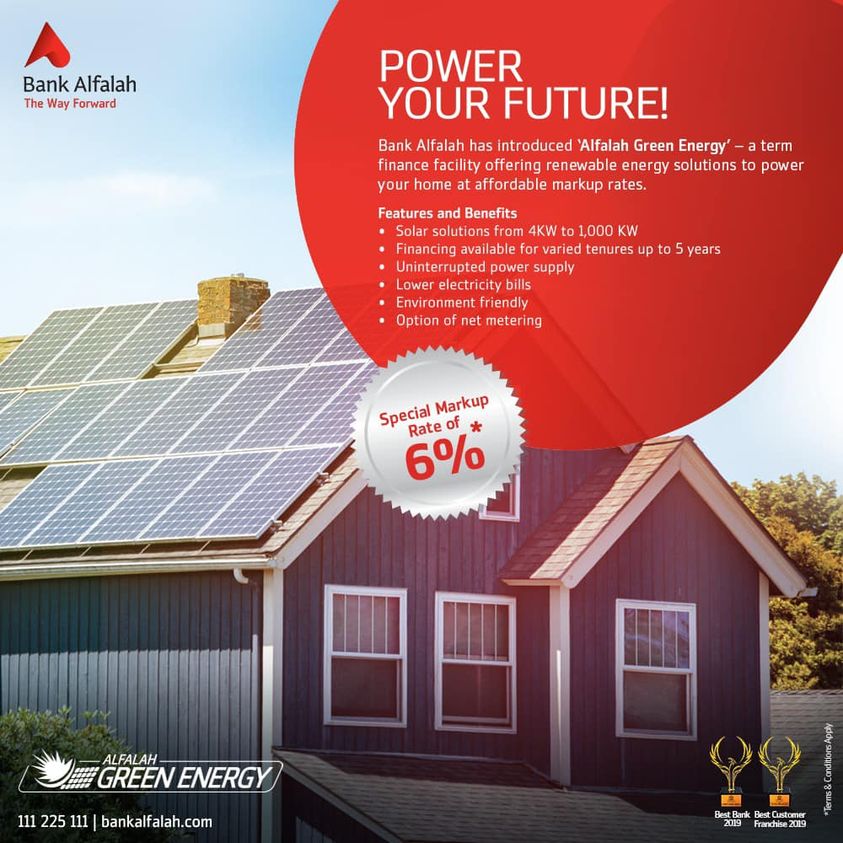
Eligibility Criteria
Must hold the computerized National Identity Card
Income Proof
Utility bills for one year
For business: will have to provide proof of being in business for the last three years.
Must hold the Bank Alfalah Bank account
Markup rate
6% per annum.
Features of the scheme
Repayment tenure of up to five years with a 3-month grace period.
Customized financing solutions are available.
20% down payment is required for self-owned premises, and 25% for rental or leased facilities.
For rental premises, the maximum financing for residential customers is 2.5 million.
For self-owned residential premises, financing is available above 4 million.
For small businesses, financing is available above 10 million.
The maximum loan limit for a solar system in Pakistan by Bank Alfalah is 400 million for a single borrower.
Processing Fee
Processing charges Rs. 5,000/- or 0.2% of the loan amount whichever is higher, non-refundable per application.
Faysal Bank Islamic Solar Financing Scheme – Pakistani Banks Offering Solar Financing
Faysal Islami Solar Solutions is a Shariah-compliant solar offered by Faysal Bank, enabling Pakistanis to install solar systems in monthly installments. The scheme offers financing of up to PKR 3 million, with a repayment tenure of up to 7 years. The profit rate is 6% per annum.
The allowed system capacity is between 4kW and not more than 20kW. Given the allowed system capacity, it appears that their loan program is more directed at residential and small-scale commercial solar.

Eligibility Criteria
To be eligible for the Faysal Islami Solar Solutions scheme, you must:
- Be a Pakistani citizen
- Own a property in Pakistan
- Age: Minimum 21 years, Maximum 60 years
- Minimum Income Requirement: Salaried Individual, PKR 100,000; Self-Employed Individual, PKR 150,000.
JS Bank Solar Financing Scheme – Pakistani Banks Offering Solar Financing
JS Bank extends its financing facility to customers nationwide, promoting the adoption of solar energy. JS Ghar Apna Solar Solution also offers solar loans. Their program is only for residential solar systems, and not for commercial or semi-commercial properties, remember that. The scheme offers financing of up to PKR 3.5 million, with a repayment tenure between 3 to 7 years. The markup rate is a fixed 6% per annum.

The good thing about this scheme is that it also covers batteries—they only mention lithium batteries, so you will have to install only lithium batteries. If you want to know what kind of batteries they are, read our explainer on lead-acid vs. lithium batteries.
Eligibility Criteria
To be eligible for the JS Ghar Apna Solar Solution scheme, you must:
Be a Pakistani citizen
Own a property in Pakistan
Have a minimum income of PKR 100,000 per month—this is not mentioned on their website. It is only my guess—also, if your income is lower than 100,000, getting a loan where around 50% of your salary goes to the loan won’t be a good idea.
Have a good credit history.
Allied Bank Solar Financing Scheme – Pakistani Banks Offering Solar Financing
Allied Bank Solar System Finance is another solar loan scheme offered by Allied Bank to help businesses and individuals realize their renewable energy goals. ABL offers financing of up to PKR 3 million, which you can repay in as many as 7 years. The interest rate is 6% per year as per the guidelines of the SBP.

Eligibility Criteria
To be eligible for solar energy system financing from Allied Bank, you must:
- Be a Pakistani national.
- Be between 21 and 59 years old.
If you are a salaried individual:
- You must be a permanent employee of a registered entity in Pakistan.
- You must have been employed for at least two years.
- You must have a minimum six-month active relationship with Allied Bank or any other bank.
- Your net monthly salary must be at least Rs. 50,000/-.
If you are a self-employed individual:
- You must have a minimum one-year relationship with Allied Bank or a minimum two-year relationship with any other bank.
- You must have been in your business or profession for at least two years in the case of a relationship with Allied Bank or at least three years in the case of a relationship with any other bank.
- Your net monthly income must be at least Rs. 75,000/- in the case of a relationship with Allied Bank or Rs. 100,000/- in the case of a relationship with any other bank.
BOP Solar Financing Scheme – Pakistani Banks Offering Solar Financing
BOP Solar is a financing scheme offered by the Bank of Punjab to help businesses and individuals finance the installation of solar panels in monthly installments. Their solar loan scheme offers financing of up to PKR 5 million, with a repayment tenure of up to 7 years. The profit rate is 6% per annum.
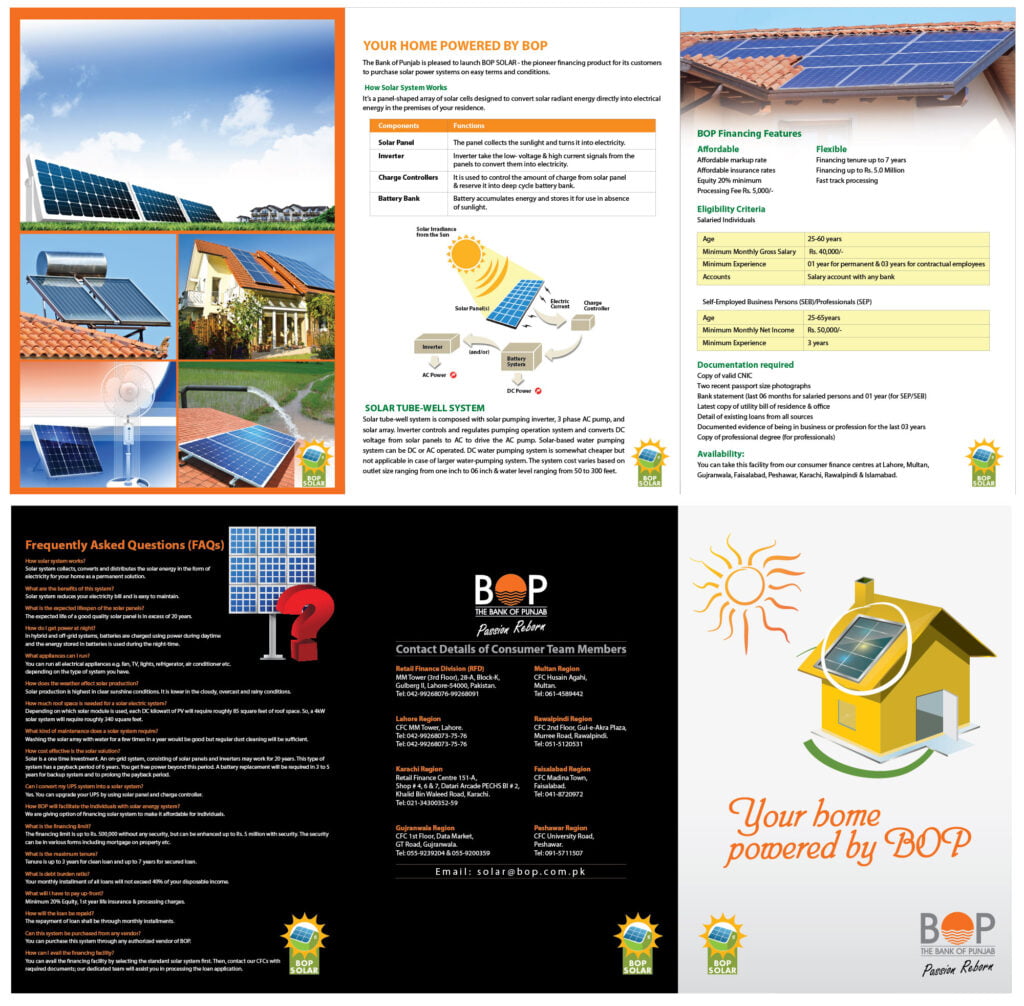
The program is available in selected cities, including Rawalpindi, Islamabad, Lahore, Karachi, Peshawar, Gujranwala, Faisalabad, Multan,
Eligibility Criteria
To be eligible for the BOP Solar scheme, you must:
For Salaried Individuals:
- Age: 25-60 years
- Income: Minimum Rs. 40,000/-
- Employment History: 1 year for permanent & 03 years for contractual employees
- Salary account with any bank
For Self-Employed Persons:
- Age: 25-65years
- Minimum Monthly Net Income Rs. 50,000/-
- Minimum Experience: 3 years
Conclusion – Pakistani Banks Offering Solar Financing
In summary, the high cost of electricity bills and the upfront expenses of solar system installation can be challenging for many individuals. The State Bank of Pakistan’s solar financing scheme offers a valuable opportunity for citizens to access solar energy by collaborating with their respective banks. All major commercial banks provide solar systems on installment in Lahore and offer loans for solar systems in Pakistan to promote renewable energy adoption and reduce reliance on expensive imported fuels. Enabling Solutions, in partnership with these banks, facilitates solar system installations through affordable financing options, reasonable eligibility criteria, and competitive markup rates.
If you encounter difficulties obtaining a solar system loan from any bank in Pakistan, Enabling Solutions can provide assistance through its Easy Monthly Installment plan. This plan allows you to install solar panels on an installment basis in Pakistan and seize the opportunity to generate your own electricity at home. For more information about Enabling Solutions Easy Monthly Installment plan, please contact us or Visit Us Today!


